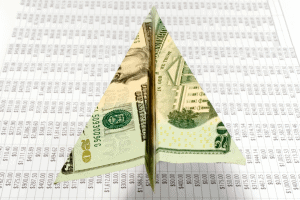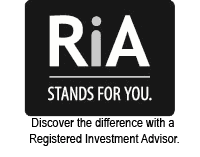Download the pdf copy here
Executive Summary
- Around the mid to late 1990’s many market observers postulated that the business cycle had been eliminated or reduced to ripples. The thinking was that changes in technology, ideology, employment, and finance along with globalization of production and consumption were leading to a reduction in economic volatility in the industrialized world. The then Federal Reserve Chairman Alan Greenspan warned that this thinking would be proven to be a mirage. He was correct.
- Is it possible that the extraordinary fiscal and monetary actions pursued during the Covid pandemic from March 2020 through March 2021 (with some spigots still open) has enabled an economic pass to skip one down cycle? The stimulus along with the closing of production facilities led to an inflationary problem that industry and the Federal Reserve have been trying to solve ever since.
- In their effort to contain inflation, the Federal Reserve increased the Federal Funds rate to 5.25 – 5.50% on July 26th. This represents an increase of 5.25% since the first increase on March 17, 2022. In addition, the Federal Reserve is allowing Treasuries and mortgage backed bonds it has purchased to mature without replacing them. This removes cash from its balance sheet, effectively eliminating the cash that it had created, thereby reducing money supply. This is known as Quantitative Tightening (QT).
- News flash: Last week the Commerce Department released an updated estimate of excess savings left on household balance sheets in the U.S. This is the estimated amount of savings beyond what one might expect Americans to have if the coronavirus health crisis had not happened. The Commerce Department adjusted the savings rate estimate prior to 2019 from 7.7% to 6.2%. As a result of this adjustment, the level of excess savings presently held is $1.3 Trillion instead of $346 Billion. This significant adjustment to the estimate of excess savings helps explain the continued strong gains in Personal Consumption Expenditures (70% of the economy) this year despite aggressive tightening policy by the Federal Reserve.
- Money supply (M2) is currency, bank deposits under $100,000, CDs, and money market mutual funds. It is fuel for our economy. Prior to the Covid pandemic, M2 was $15.32 Trillion at 2019 year end. Long term Federal Reserve action to support stable economic growth targets M2 growth of 3% to 6% per year. At 6% growth from the end of 2019, M2 would be $18.9 Trillion. Via QT, the Federal Reserve has lowered M2 eleven out of sixteen months through July this year. It is 3.7% lower than it was a year ago. M2 at July month end was $20.9 Trillion. Fiscal and Monetary stimulus during the pandemic has resulted in excess M2 growth of over $2 Trillion even after sixteen months of QT. This, in addition to the household excess savings is very likely an additional source of resilience for the U.S. economy.
- The Fed has indicated that they are near the end of interest rate increases. But they intend to hold rates higher for longer, and maybe only two 0.25% reductions in 2024. They indicate future direction will be data dependent.
- Inflation continues to trend down. The Fed’s favored reading PCE Core inflation declined to 3.9% annualized rate in August, down from the 7% peak rate in June of 2022. The three month annualized rate of PCE Core inflation was 2.2%.
- We give equal credit to the Federal Reserve and industry efforts to get supply in line with demand in bringing inflation down.
- Further, we lean towards the conclusion that the massive stimulus applied during Covid continues to enable good economic growth and the likelihood of a one-time pass of the business down cycle or at least a one-time ripple sized down cycle.
The Federal Reserve’s View
- Raphael Bostic, President of the Atlanta FED recently penned his thinking on monetary policy in his quarterly President’s message. We will summarize below, but to read the document, click here: https://www.atlantafed.org/about/atlantafed/executive-leadership-committee/bostic-raphael/message- from-the-president/2023/10/03/inflation-fight-is-on-track-but-path-to-two-percent-could-be-bumpy
- “The optimal outcome of the Fed’s historic and aggressive monetary policy tightening cycle would be 2 percent inflation in a reasonable time frame without widespread economic pain– soft landing. Achieving this outcome will require aggregate demand and supply to come more into balance. We have seen signs of that balance coming closer in many areas.”
- The FED is on track to achieve their goal of 2% inflation, but the road from 3% to 2% will not be a straight line, just as the road from 7% to 3% has included blips over the last 12 months.
- Monthly inflation data can be skewed by a few goods or services. The FED has alternative measures of inflation to help them tease out the true inflation signals. The alternative measures continue to describe slowing underlying price growth.
- Their inflation expectations survey and conversations with price setters indicate the downward momentum of inflation is likely to continue.
- Reports from employers suggest the slowdown in the labor market will continue. Wage growth has slowed a bit, and our surveys and direct conversations with executives are indicating that the trend will likely persist into 2024.
- Risk factors to achieving a soft landing include high energy prices and geopolitical shocks. Factors that could aid the achievement of lower inflation include the end of pandemic-era supports.
- This will not be a surprise to anyone: “Lowering inflation is Job #1 for the FED”. The FED is firmly committed to restoring price stability.
Macro-Economic Perspectives
- The USA has now strung together four quarters of real GDP growth. Q3 2022 was 3.2%. Q4 2022 was 2.6%. Q1 2023 was 2.0%. Q2 2023 was 2.4%. Real growth is nominal growth less inflation.
- The Federal Reserve Bank’s Federal Open Market Committee (FOMC) of twelve members provided their September forecast for change in Real GDP, unemployment rate, inflation, and the Federal Funds rate.
| FOMC September 2023 Forecasts Percent | 2023 | 2024 | 2025 | 2026 |
| Change in Real GDP, 4th Q to 4th Q Unemployment Rate by Year End Headline PCE Inflation, 4Q to 4Q Core PCE Inflation, 4Q to 4Q | 2.1 3.8 3.3 3.7 | 1.5 4.1 2.5 2.6 | 1.8 4.1 2.2 2.3 | 1.8 4.0 2.0 2.0 |
| Federal Funds Rate | 5.6 | 5.1 | 3.9 | 2.9 |
| Implied Natural Interest Rate | 1.6 | 0.9 |
- This implies slower growth in Q3 and Q4 this year. (Yet other respected forecasters see a 3+% to 5+% real growth in Q3). Small increases in unemployment, but still at healthy levels. Continued gradual reduction in inflation. One more increase in the Federal Funds rate this year, two reductions in 2024, and multiple reductions in 2025 and 2026. We will discuss the Natural Interest Rate implications in the Securities Market Perspective at the end of this letter.
- We are experiencing an earnings growth recession between Q4 2022 and Q3 2023. Is this our business cycle ripple? But earnings growth is projected to turn up in Q4 this year.
- The S&P 500 earnings growth in Q4 2022 was a negative 0.8% year over year. In Q1 2023 earnings growth was 3% year over year, but it was 6% lower than Q3 2022.
- Q2 earnings growth was negative 5% year over year.
- Q3 earnings growth projections are approximately negative 0.1% to negative 0.2%. o Q4 earnings growth projections are about +7.5%.
- Money Supply (M2 – cash, checking and savings deposits, money market mutual funds, and CDs). This was covered in the Executive Summary, despite Qualitative Tightening by the FED, money supply remains well above trend.
- The velocity of money (the frequency at which one unit of currency is used to purchase goods and services within a given period) has risen from a bottom in Q2 2020 of 1.128 to 1.300 in Q3 2023 but is still historically very low when compared to historical average of about 1.8.
- Inflation: Data suggests inflation has peaked, but its progression down is not a straight line.
- The Federal Reserve’s goal is to achieve a return to an inflation rate of 2%.
- The Federal Reserve remains vigilant, but it believes it is on the track to success.
- Consumer financial well-being remains good and stable.
- The personal savings rate has declined from 6.2% in 2019 prior to the pandemic, after rising to double digit levels in 2020 and 2021, to below 3% for the last three months of 2022. The savings rate has rebounded to greater than 4.5% through August this year. In the aggregate, inflation has slightly reduced consumers ability to save. But recent data analysis by the Commerce Department indicates that excess savings levels remain high at all income quintile levels.
- Nominal M2 money supply remains profoundly supportive of consumer activity.
- Year over year real disposable income has risen six out of seven months through July and every month on a year over year basis.
- Real personal consumption expenditures, a comprehensive measure of consumer spending shows rising expenditures after adjusting for inflation throughout 2022 and continuing through August this year. September data has not been released yet.
- Household net worth reached $111.04T at the year-end 2019. Since then, it had risen to $142.3T at the end of 2021. At Q3 2022 end, it declined to $136.2T. It has since climbed back up $145.95T at the second quarter end this year. Household net worth continues to be supportive of economic growth. Source: Federal Reserve (September 2023 reading comes out in December).
- Bank delinquency rate on all loans and leases at all Commercial banks remains low at 1.25% through Q2 this year. Most categories remain low and steady, except credit cards which rose from very low levels one year ago. But, at 2.77%, the credit card delinquency rate remains just slightly above the level at the end of 2019, 2.62%. Data from the Federal Reserve.
- Revolving consumer credit as % of disposable income is coming off historically very low levels. Data from Federal Reserve and JPM.
- 2000 – 2010: 9%, 2011 – 2020: 7%, 2021: 4.5%, July 2023: 6.2%.
- Student loan payments begin again this month and represent 9.2% of all consumer debt. This is the lowest share of consumer debt since 2013.
- Employment – There has been some cooling off in the labor market, which helps bring inflation down, but it remains strong. (Just in – 336,000 jobs added in September).
- The unemployment rate rose from 3.4% at Q1 end to 3.8% at the end of August. Job openings have declined from a peak of 12,000,000 in March of 2022 to 9,600,000 in August of 2023.This still accounts for a lot of unfilled jobs. The average level in 2017 through 2019 was 6.8 million. There are 1.5 openings per unemployed person.
- The unemployment rate has risen as more people are seeking to go back to work. The labor-force participation rate has been rising steadily since November from 62.2% to 62.8% now. There is evidence that temporary workers are opting for full time.
- Macro-economic Summary or Conclusions (The consumer is strong and working).
- Real income has turned positive and real consumer spending is still rising.
- New research shows that excess savings remains very high.
- The savings rate has improved in 2023.
- Labor supply is still tight but is loosening.
- Labor participation rate is rising.
- Inflation is trending down, and FED readings of momentum are also pointing to lower inflation. The FED promises vigilance.
- Additional inflation fact: This bump in inflation we have experienced in recent years will likely not be turned back; let’s hope so – deflation would not be pleasant. Over the past 30 years, 20 years, and 10 years from 2020 respectfully, inflation averaged 2.25%, 2.04%, and 1.74%. If you extend each of these periods through 2022, inflation averaged about 2.5%. We conservatively use an average rate of inflation of 3% in client projections.
- Corporate earnings recession is forecasted to end in Q4.
- Will it be different this time – just a ripple (corporate earnings recession) and no business down cycle?
Key Segments of the Economy
Consumer spending (70% of GDP): Month to month real personal consumption expenditures were flat in February and March this year. But year over year comparisons for each month this year are positive. The Institute of Supply Management (ISM) reading for services has remained above 50 each month with a bit of a lull in March through May but reviving to 54.5 in August. 50 is the dividing line between decline and growth. The services portion of the economy is very strong.
Manufacturing (11% of GDP): The ISM reading for manufacturing dropped below 50 in November. It has remained below 50 through August. This corresponds to the inventory reductions at retailers beginning last year. Industrial production (includes mining, gas and electric utilities, and manufacturing) recorded month- over-month declines in November and December and has been flat so far this year. The goods portion of our economy is in recession.
Construction (4.1% of GDP): This data is not adjusted for inflation, but total $ spent on construction has risen each month this year through August and is up 7.4% year over year in August. Residential construction was down 3% year over year in August. Non-residential construction is running around 18% year over year gains each month this year through August. There isn’t any evidence of a slow-down in non-residential construction, not to mention reshoring efforts for CHIP manufacturing and Inflation Reduction Act projects. But with a shortage of existing homes for sale, new single family residential housing began picking up month over month in May despite elevated interest rates. (Data from U.S. Census Bureau and Federal Reserve of St. Louis)
Home sales: The impact of high prices and higher interest rates are being felt in existing and new single-family home sales. The National Association of Realtors (NAR) reported that combined existing and new home sales declined 33% in 2022 from 6,929,000 to 4,636,000 units. Sales remain depressed in 2023. Mortgage data firm Black Knight reports that two-thirds of mortgages in place are under 4%. Further, 73% of primary mortgages have a fixed rate for 30 years. At present mortgage rates, existing home sales will remain depressed.
The supply of homes for sale has risen from 1.6 months in January 2022 to 3.3 months at the end of August this year. Six months’ supply is considered a balanced marketplace for buyers and sellers. This increase in supply is largely due to the overbuilding of multi-family housing units. The annual build rate for multifamily housing units dropped 47% year over year in August.
Housing affordability is a significant issue. Additional housing supply is needed, but higher interest rates will conflagrate the problem before it can get better.
Securities Market Perspective
By the end of the third quarter 2023, a 100% stock portfolio with 20% invested in international was up 9.60% with dividends reinvested. Intermediate term bonds (Bloomberg Aggregate Bond Index) and short-term bonds (Bloomberg U.S. Gov’t Credit 1 to 3 Year Bond Index) were down 1.21% and up 1.87%, respectively.
Overall index returns just don’t tell the story this year. In equities, seven growth stocks (Apple, Microsoft, Alphabet/Google, Amazon, Nvidia, Tesla, and Meta/Facebook) made up all the return in the S&P 500 index. Absent these seven stocks, large cap equities were flat through September. These seven stocks took a severe beating in 2022 but roared back in 2023. Through October 4th, the small cap stock index is down 0.67% and the mid cap stock index is up 1.87%. So, absent seven stocks, the stock market is flat so far in 2023. These seven stocks have skewed the growth stocks vs. value stocks return comparisons. Although, if you go back to the beginning of 2022 or 2021 for comparison purposes, value is leading.
The overarching story this year is in the bond market. [The rest of this section is a must read] The 10 year Treasury yield stood at 3.88% at year end 2022. By April 5th, the 10 year Treasury yield dropped to 3.40% driven by the belief the Federal Reserve monetary policy (designed to bring down inflation) of raising the Federal Funds rate and selling bonds to reduce money supply would eventually induce a recession and force the Federal Reserve to, in turn, lower interest rates. When bond prices rise, yields decline. Hold tight, it was a bumpy trip from April 5th to October 3rd when the 10 year Treasury rate hit 4.81%. That is right – yields up means bond prices down. So, what happened? The economy (as described in this letter) has done well; it has shown strength (other than the goods sector). This means the Federal Reserve must do more to battle inflation. It has raised the Federal Funds rate a couple of more times and convinced investors that they intend to keep rates higher for longer or until they are convinced inflation is certain to decline to 2%.
On page 2, we promised to discuss the implications of the FED’s forecasted (higher) natural interest rate forecast. The natural interest rate (also known as the real neutral rate of interest) is the designed difference between inflation and the Federal Funds rate of interest. It is an estimate of a rate needed to achieve full employment and stable inflation. Historically, as the US economy has grown significantly, this rate had declined from 2.5% to 0.5% as declared by the Federal Reserve. In their September forecast, the FED estimated that inflation would reduce back down to 2% by 2026. But the Federal Funds rate would be 2.9%, thereby implying a natural rate of 0.9%. And in 2025 there is an implied natural rate of 1.6%. So, we do not know if this is part of their process of “jawboning” inflation down or if they truly believe an increase in the natural interest rate is appropriate.
It is an especially important distinction. DBFM has been very reluctant not to move out of short term bonds into intermediate term bonds before intermediate term interest rates peaked. If one moves before the peak is achieved, one could realize short term losses on intermediate term bonds. Many industry “experts” have been postulating that advisors should extend duration (buy intermediate term bonds) this year to lock in higher interest rates for the future. DBFM has resisted this inclination in that we have not believed that a recession was coming or if one did come that it would be very mild. A recession would form a new peak in intermediate term interest rates. Now add in the prospect of a higher natural interest rate and one needs to be extra careful in moving into intermediate term bonds. One would have to be very fortunate to time the transition from short term bonds into intermediate term bonds perfectly. But eventually short term bond yields will decline, and intermediate term bond yields will peak – not necessarily at the same time.
DBFM avoided much of the intermediate term bond blood bath in 2022 by positioning in short term bonds and bond funds. We have continued to do so in 2023 and have created timed windows to give us the option whether or not to extend duration (move towards intermediate term bonds). In the meantime, we are reaping excellent yields in short term bonds, and overall, we are beating the short term bond index.
Last note regarding rising interest rates: Rising interest rates not only negatively impact the return of bonds (especially intermediate and long term bonds), but also, they initially negatively impact the market value of stocks as higher risk free interest rates attract money away from stocks which are riskier.
When the dust settles, we will know whether we have had a recession or a ripple, corporate earnings will be rising, we will see stock prices rise as well.
Wrap-Up
Black swans aside, we see evidence of declining inflation, some cooling in a still strong labor market, while the consumer and economy remain resilient. A recession remains a possibility but given the extraordinary and extended benefit of a broad and unusually high money supply and personal excess savings, we see it as a mild one or just a ripple if it were to occur.
In the meantime, we remain long term bullish, seeking necessary or opportunistic tactical adjustments to portfolios, and remain diversified for long term success.
Also, please know that we are aware of the long length of these letters and the challenge it is to read them. They are intended to keep you well informed, aware of what we are seeing and thinking, and an aid to help us clarify the economy and market for our decision making. In addition to the Executive Summary, we attempt to provide a bold font for emphasis of key information as an option to shorten your reading time. There are a considerable number of key facts, analysis, and anecdotal evidence omitted from each of these reviews.
Please feel free to contact us with any questions, or if you would like to schedule a face to face, virtual, or phone meeting.
Thank you,
Dave Dickmeyer, M.B.A.
Wealth Advisor
Principal Owner
Ian D. Boyce, CFP®
Certified Financial Planner™
Principal Owner
Drew Lanphear, CFP®, RICP®
Certified Financial Planner™
Director Wisconsin Office







